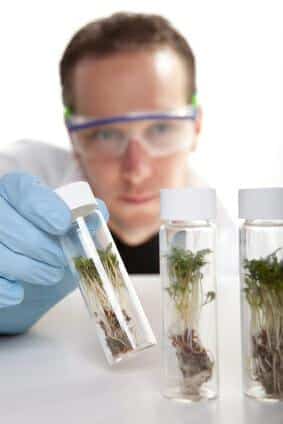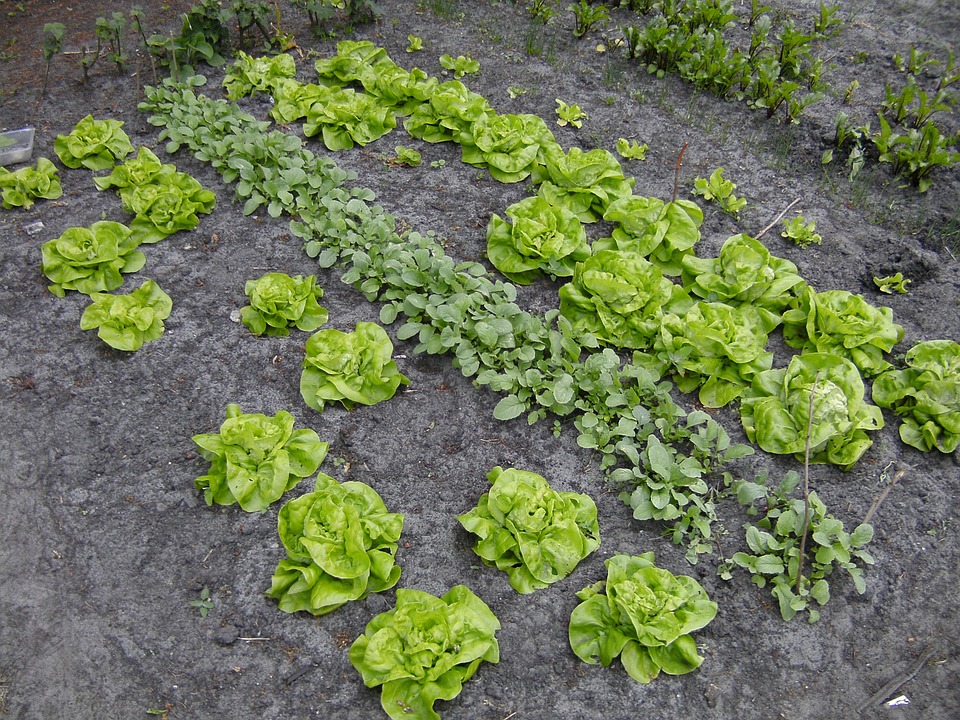Two weeks ago, as I was finishing up the piece on “Savory Herbs and Unsavory Weather,” I decided that today’s column would focus on invasive herbs. Unfortunately, another potential invasion has caused me to put that plan on the back burner.
This invasion is so imminent that I can’t wait two weeks to give you the news. Because I was caught napping, I barely have one week to help spread the alarm.
 When it comes to genetically modified crops and their associated herbicides, Monsanto and Roundup certainly dominate the discussion. This is only natural. Monsanto’s line of Roundup Ready GM crops is currently the dominant force in the GM seed market. However, that doesn’t mean that their chemical rivals have given up the game.
When it comes to genetically modified crops and their associated herbicides, Monsanto and Roundup certainly dominate the discussion. This is only natural. Monsanto’s line of Roundup Ready GM crops is currently the dominant force in the GM seed market. However, that doesn’t mean that their chemical rivals have given up the game.
In laboratories throughout the world, highly skilled scientists with more brains than sense are working day and night to come up with the next GM breakthrough for outfits like Bayer, DuPont, Dow, and Syngenta. The whiz kids at Dow AgroSciences have performed their tasks so well that Dow filed an application at the USDA to give non-regulated status to their discovery.
So, what genetically modified creation do the wizards of Dow hope to unleash?
Well, believe it or not (and you’d better believe it) one of the original manufacturers of the infamous Agent Orange, used extensively with horrid side effects during the Vietnam War, has developed new generation GM crops that are designed to resist a major ingredient in Agent Orange. To be a bit more specific, these crops will have the ability to survive spraying of 2, 4-Dichlorophenoxyacetic acid— commonly called 2, 4-D by folks like me who can’t wrap their tongues around multi-syllabic scientific names.
Those who are familiar with the agricultural use of herbicides might, at first glance, consider this a non-threatening development. After all, 2, 4-D is the third most used herbicide in North America and the most widely used herbicide in the world. What’s the harm of farmers using more of something that is already being used?
For starters, we’re not talking using a little more; we’re talking about using a lot more. The whole point of building a Frankenfood monster crop is so that you can carpet bomb hundreds of acres and leave only your laboratory-created mutants standing. If Dow’s 2, 4-D resistant crops are approved, it won’t be long before a billion extra pounds of 2, 4-D herbicide will be raining down from the skies over farms and fields. If you think that’s an exaggeration, consider the fact that over a billion and a half pounds of Monsanto’s Roundup were used in 2007 and that number just covers American use.
Ensure a healthy harvest through environmentally friendly gardening techniques.
Adding more 2, 4-D to our already stressed environment is rather scary. While the ever-diligent United States Environment Protection Agency refuses to recognize a link between 2, 4-D and cancer, the International Agency for Research on Cancer has classified 2, 4-D as a class 2B carcinogen (a substance that possibly causes cancer in humans).
The Environmental Protection Agency has stated that toxic effects of 2,4-D were seen in laboratory animals when they were exposed to levels above the ability of the renal system (kidneys) to clear the chemical from the animals’ systems or at relatively high doses. OSHA has some pretty stringent rules for over-exposure to 2,4-D which, according to its publication Occupational Safety and Health Guideline for 2,4-D (Dichlorophenolxyacetic Acid), can cause the following clinical symptoms: stupor, coma, coughing, burning sensations in lungs, loss of muscular coordination, nausea, vomiting, or dizziness.
With all this in mind, I think many of us can agree that if Dow’s new line of crops were just resistant to 2, 4-D, it would be bad news. But, if we probe a little deeper, we discover that the news is even worse than bad.
Dow has developed three-gene, herbicide-tolerant soybean and corn seeds that they hope to sell under the Enlist label. In addition to 2, 4-D resistance, these engineered seeds will also have built-in resistance to glufosinate and glyphosate. For those of you keeping score at home, glufosinate is the main ingredient in nonselective systematic herbicides like Bayer’s Liberty, and glyphosate is the main ingredient in Monsanto’s ever-popular Roundup herbicide. So, a farmer who plants Dow’s Enlist seeds, if they are approved, will be able to spray all three potent herbicides on these crops.
What does this mean to the future food supply of the planet? Frankly, nobody knows what will happen. We’ve never seen anything like these seeds. I am worried about their impact, and I’m not alone. I think the people at GreenMedInfo summed up the potential dangers best when they wrote the following:
Instead of learning from Monsanto’s colossal mistakes (which happens when you play geneticist-as-God and use a broad spectrum poison to kill all but your ‘chosen’ plants) Dow AgroScience’s solution is to multiply the problem by a factor of three, creating the ‘first-ever, three-gene,’ herbicide-tolerant staple crops.
What this means is that instead of using only one highly toxic herbicide (Roundup), three will be used simultaneously, further increasing the risk of serious exposures, and setting up the conditions for synergistic toxicities – something that toxicological risk assessments on singular herbicide ingredients, which establish ‘an acceptable level of harm,’ never account for. (Sayer Ji, Dow’s Deadly Harvest: The Return of Agent Orange, www.greenmedinfo.com)
The cutoff date for commenting on Dow’s application for non-regulated status to sell these Enlist seeds is February 27. I urge you to do more research on this topic and, if you agree with me that these mutant monsters present a host of dangers, submit your comments to the USDA before it is too late.
Thanks for dropping by. If all things go well and the world doesn’t do something else to punch up my blood pressure, we’ll get back to invasive herbs in my next column. Until then, take care of the ones you love and keep your eyes open.
©2012 Off the Grid News
Off The Grid News.










